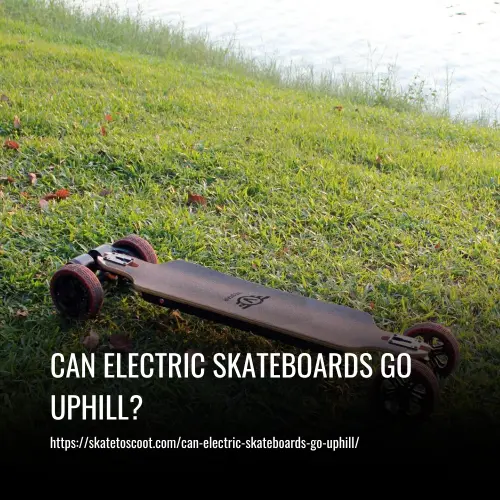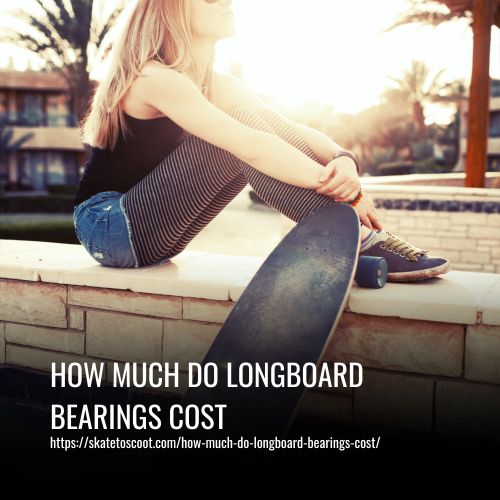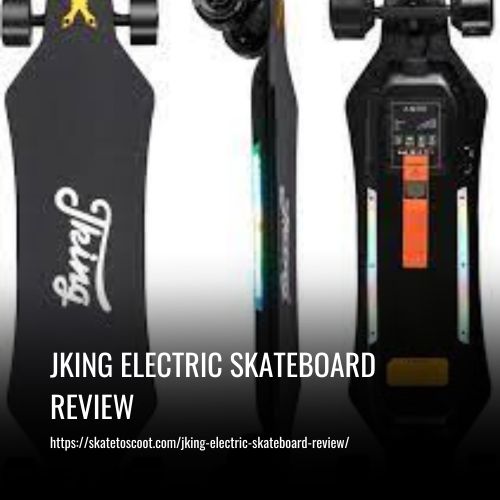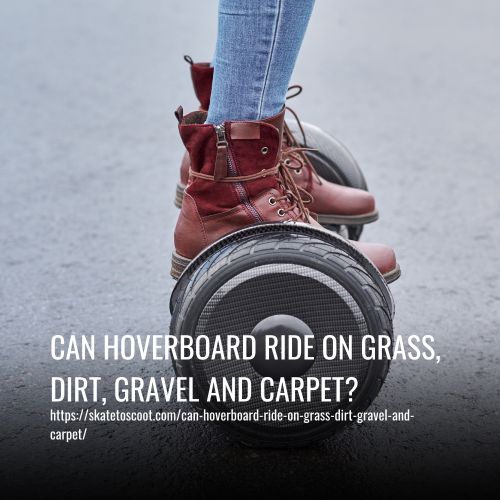As an Amazon Associate we earn from qualifying purchases.
Electric skateboards have the capability to climb uphill! Most electric skateboards are designed to handle speed bumps and elevations on urban roads. But for a really hilly area, you need a powerful board to make it up those hills.
Regular boards aren’t really up to the challenge, so you may end up having to carry your skateboard in your backpack and climb the hill on foot. But if you invest in a higher-end, more powerful electric skateboard, then it won’t be an issue as they’re built for even more challenging terrains.

Factors That Make an Electric Skateboard Go Uphill
Uphill journeys are one of the most challenging tasks for an electric skateboard. The ability to go uphill is largely determined by a number of key factors, including battery power, motor power, and weight capacity.
1. Gradient or the Hill’s Incline
The Gradient or the Hill’s Incline is a major factor when it comes to electric skateboards and traveling uphill. Measured in degrees or percentages, the incline of a road or sidewalk can determine whether or not your electric skateboard will be able to make it up the hill.
With even budget electric skateboards able to climb a 5% gradient, the average rider should target one that can manage 10-15% inclines. On the other hand, if you weigh more than 250 pounds and you’re trying to navigate around those particularly steep hills, then you’ll need something with more power! That’s why knowing the hill’s incline is especially important.
2. The Motor Power
The motor power is a major factor in determining how successful your electric skateboard will be in tackling those steep hills. That’s why it’s important to choose an e-board with the right amount of wattage in its motor. Low-end boards typically feature around 100 watts, but these only work effectively on flat and even sidewalks.
For more advanced riders who need a board that can handle inclines, you’ll want to look for something ranging between 150 to 350 watts of motor power. And for those really tough hills, there are some premium electric skateboards available with motors up to 500 watts! No matter what type of riding you’re doing, having the proper motor power is essential for success.
3. The Battery Capacity
The battery capacity is undoubtedly one of the most important factors for electric skateboards when it comes to going uphill. In order to maintain sufficient power, electric skateboards require a powerful battery with a high capacity. When the gradient goes up, say more than 20%, the battery will be drained much faster.
You should practice different riding techniques to conserve your power and battery life as much as possible. Don’t forget to also check and maintain your battery regularly for optimal performance. With these tips in mind, you should have no problem getting up those steep hills with your electric skateboard!
4. Size of the Wheels
The size of the wheels on your electric skateboard is an important factor to consider when choosing one that can go uphill. Smaller wheels are more likely to climb hills due to their ability to accelerate faster, but it’s important not to prioritize this feature over other aspects when making your decision.
5. The Torque
The torque of an electric skateboard is key to its ability to climb hills. Manufacturers spend a lot of time trying to find the right balance between power, speed and torque in order to allow the board to go uphill. The components of an electric skateboard play a major role in the amount of torque that is sent to its wheels, which largely influences its hill-climbing ability.
For example, larger wheels can make the e-board move quicker, but reduced torque can make it difficult to conquer inclines. Understanding this balance between power, speed and torque is essential for anyone building or buying an electric skateboard so they can properly configure and calibrate their ride for successful hill climbing.
6. Rider Weight
The rider’s weight is a significant factor in conquering inclines with an electric skateboard. The heavier the rider, the more power will be required for them to make it up the hill. A rider who weighs 70 kg should have no trouble climbing even steep hills with a standard electric skateboard.
For riders over 80 kg, however, it is recommended that you opt for a premium motor type as it will provide you with more power and make the journey much easier. It is important to keep your weight in mind when choosing an electric skateboard as this could determine whether or not you are able to go up big hills.
7. Type of Terrain
The type of terrain you use your electric skateboard on has a huge impact on its ability to travel up hills. A smooth surface can make it much easier for your board to go uphill, allowing it to move faster and with less resistance from the battery power.
On the other hand, rough terrain is like an extra burden that requires more energy from your battery in order to move up the hill. For this reason, it’s important to try and find a path with smoother surfaces if you’re looking to travel up hills with your electric skateboard.
8. Riding Downhill
Riding downhill on an electric skateboard can be fun, but it is also dangerous. Going too fast could put you at risk of losing control. This is why it’s important to have some sort of braking system in place when riding any e-skateboard, especially in hilly areas.
The most common types of braking systems include regenerative braking and dynamic brakes, which are activated via a remote or an anti-lock electromechanical disc brake (MagBrake). Having one of these in place will make sure that you have more control over your descent and can stay safer while enjoying the thrill of riding down a hill!
Effects on the Board When You Ride Electric Skateboards Uphill
Riding electric skateboards uphill can take a toll on your board. The motors will have to work harder when you’re going uphill which means the battery will drain faster than usual. Regenerative braking is built-in for most e-boards, however, it only feeds back in at about 20% of the amount of energy used to climb the hill.
Additionally, this increased workload causes your motors to heat up over time and they should be monitored accordingly. If they become too hot, it’s best to give them a break and let them cool down before continuing your ride.
Finally, when riding downhill, it is important that you know how to use your brakes effectively and safely so that you don’t lose control or pick up too much speed which could lead to speed wobbles and you falling off.
Is It Dangerous to Ride Uphill
Riding an electric skateboard uphill isn’t very dangerous in itself, but you should be cautious when doing so. If you live in a very urban area or somewhere like San Francisco with lots of uphills and downhills, then riding an electric skateboard can become overwhelming and dangerous for you.
You should always be aware of the traffic, road conditions, street signs, as well as your board’s performance before attempting to ride uphill.
When it comes to your electric skateboard itself, going uphill does require a lot of power which means draining the battery significantly. This kind of heavy driving can cause damage to the motor and battery if done too often.
So while it is possible to go uphill on an electric skateboard, there are certain risks involved if you don’t pay attention and take necessary precautions.
What are the Risks of Riding Uphill
Riding an electric skateboard uphill comes with quite a few risks that you must take into consideration. First, your heart rate and blood pressure will increase due to the intense physical intensity involved in riding uphill. Your muscles may tire quickly due to the strain against gravity, resulting in the lactic acid build-up.
Additionally, your balance and coordination will be compromised because of the extra effort needed to stay on course. Finally, there is a higher risk of dehydration and heat exhaustion since you will be working so hard to get yourself up the hill. All of these risks should be taken into account if you decide to ride an electric skateboard uphill!
FAQs
Most electric skateboards are capable of climbing hills with an incline of up to 15-20%. However, some high-powered models can handle even steeper hills.
The average speed of an electric skateboard when climbing uphill can range from 5-12 miles per hour, depending on the power of the motor and the steepness of the incline.
Regular maintenance, such as checking the motor, battery, and wheels, is essential for optimal uphill performance. Ensuring that the skateboard is in good condition will help it tackle uphill climbs more effectively.
Yes, electric skateboards are designed to support riders of varying weights. However, the performance of the skateboard when climbing hills may be affected by the weight of the rider.
Some electric skateboard models are explicitly built for uphill performance and may feature more robust motors and sturdier construction. It’s essential to consider these factors when choosing an electric skateboard for uphill rides.
Conclusion
In Conclusion, Electric skateboards have the capability to go uphill. However, it’s important to remember that going up steep hills may require more power and effort than you would think, so be sure to find a board with the right specs for your chosen route.
To keep you safe, make sure to wear protective gear such as elbow and knee pads and stay alert while riding. With the right preparation and a sensible attitude toward safety, an electric skateboard can make an exciting addition to any hilly terrain!
Amazon and the Amazon logo are trademarks of Amazon.com, Inc, or its affiliates.



